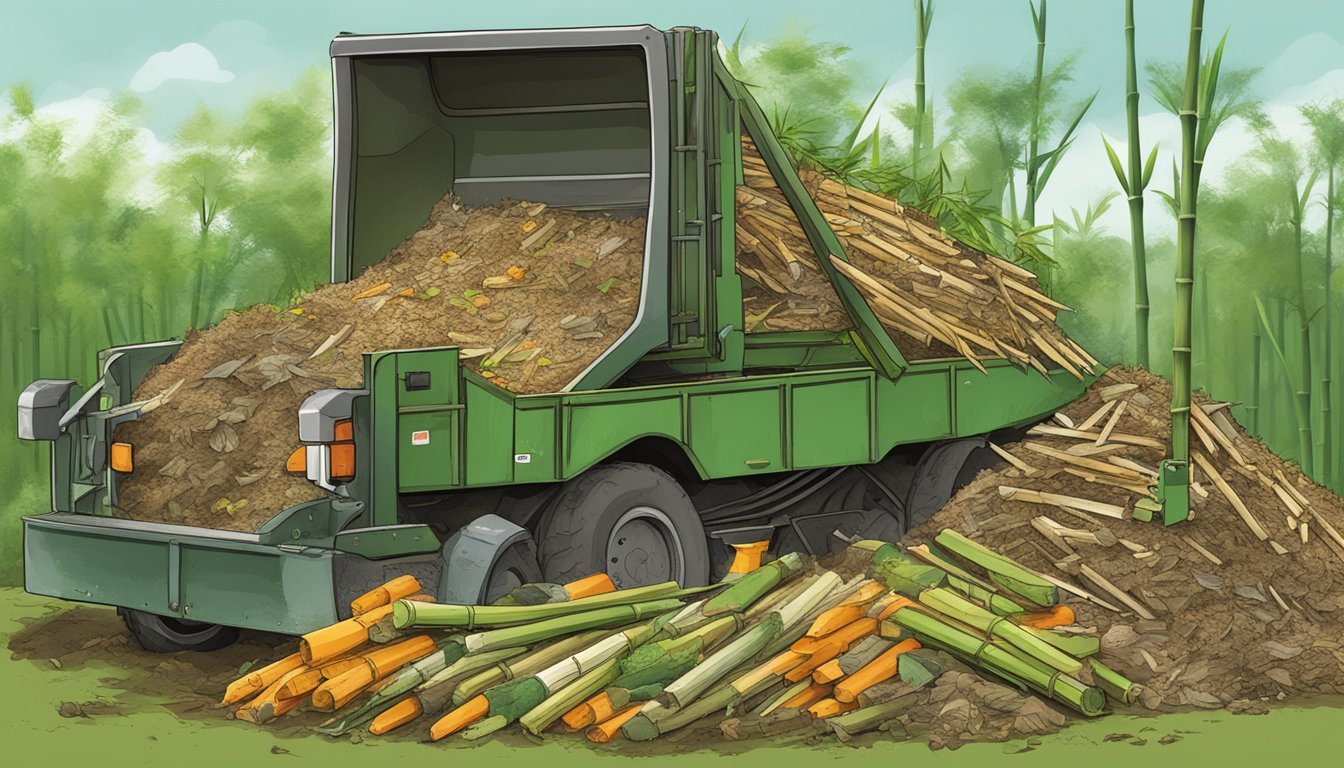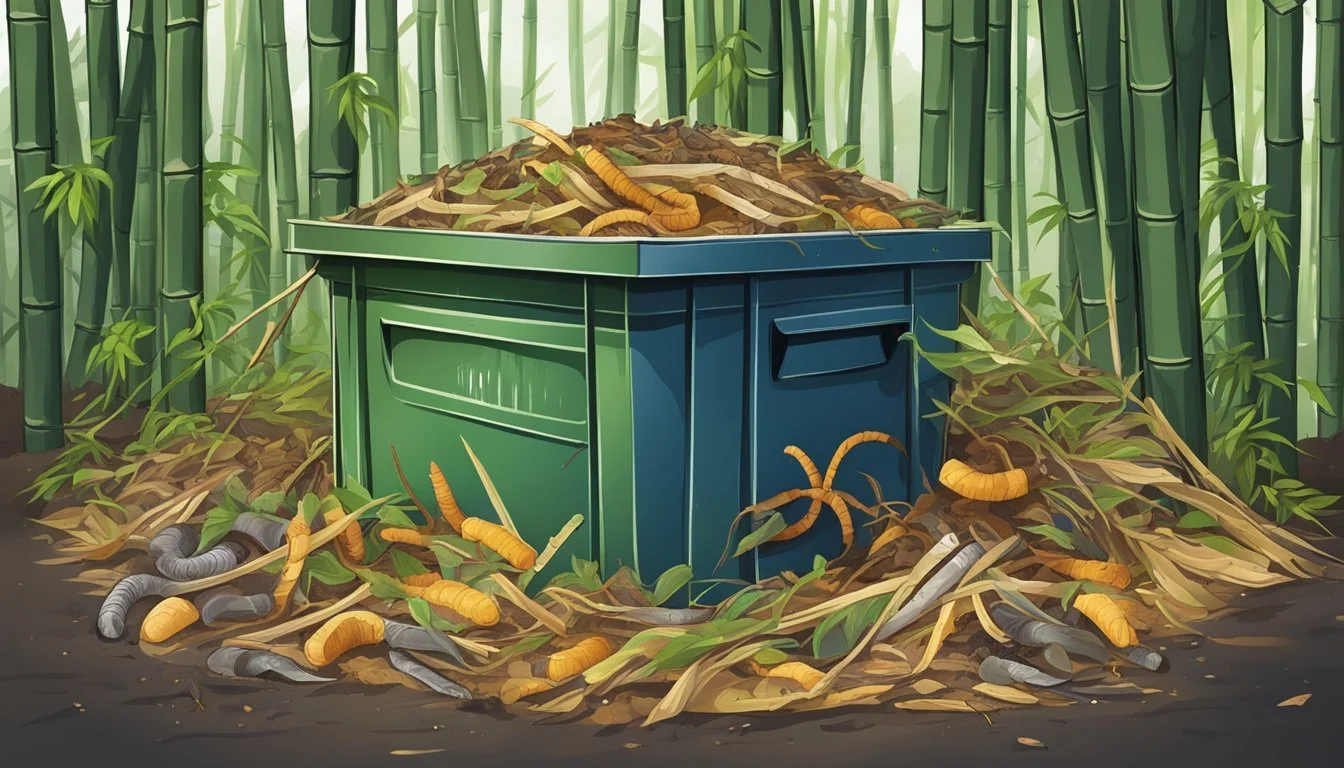Can You Compost Bamboo?
Understanding Its Biodegradable Properties
Bamboo, a versatile and rapidly growing plant, has become synonymous with sustainable living due to its eco-friendly credentials. As an organic matter, bamboo indeed has the potential to be composted, which is a natural process of recycling decomposed organic materials into a rich soil known as compost. The interest in composting bamboo stems from its reputation as a sustainable resource – it grows quickly, requires no pesticides, and produces more oxygen compared to many other trees, making it an excellent candidate for eco-conscious waste management.
Composting is lauded for its environmental benefits, transforming kitchen scraps, yard waste, and other organic materials into nutrient-dense food for gardens. Bamboo, when added to a compost pile, breaks down and contributes to this nutrient-rich material. However, it's important to note that while leaves and twigs decompose relatively swiftly, the lignin-rich tough bamboo poles decompose at a much slower pace. This property demands a more patient approach to composting the denser parts of the bamboo.
Understanding the composting requirements and time scales for different parts of the bamboo plant is key for a successful and eco-friendly composting process. By recognizing the natural composition of bamboo, compost enthusiasts can integrate it into their sustainable practices effectively, ensuring that the bamboo used in products and landscaping does not go to waste. This aligns with increasing global efforts to reduce waste and promote a more circular economy in which materials are reused and regenerative.
Understanding Bamboo and Composting
When composting bamboo, considering its structural properties and the composting process helps optimize decomposition and nutrient recycling.
Bamboo Characteristics
Bamboo, a member of the grass family, is known for its fast growth and sturdy, woody culms. These stalks are rich in cellulose and lignin, which provide strength and resistance to decay. Bamboo leaves and roots also contain silica, which can lead to slower decomposition. Products made from 100% bamboo are biodegradable, returning to the soil as nutrients over time.
Basics of Composting
Composting is a natural process that involves the breakdown of organic matter by microorganisms, resulting in a nutrient-rich soil amendment. An effective compost pile requires a balanced mix of carbon-rich materials (often referred to as 'browns') and nitrogen-rich materials ('greens'). Bamboo, particularly the leaves and sheaths, can serve as a carbon-rich addition, while green waste like food scraps enriches the nitrogen content.
Carbon to Nitrogen Ratio: An ideal compost pile should maintain a carbon to nitrogen ratio of about 30:1 to expedite decomposition without odor.
Moisture and Aeration: Adequate moisture and air aeration are necessary to support microbial life, speeding up the decomposition of materials like bamboo.
By composting bamboo, we effectively reduce our carbon footprint by recycling waste into valuable nutrients for the soil, supporting a more sustainable ecosystem.
Preparation of Bamboo for Composting
Before incorporating bamboo into a compost pile, proper preparation is crucial to ensure effective decomposition. This includes reducing the size of the material, maintaining an appropriate carbon to nitrogen ratio, and facilitating the composting process.
Cutting and Shredding Bamboo
Bamboo twigs, sticks, and even cutting boards and chopsticks can be composted when prepared correctly. Cutting bamboo into smaller parts is the first step; this includes breaking down large canes into twigs or shredded material. Using gardening tools or a mechanical shredder, bamboo should be cut into pieces no longer than 1-2 inches to quicken decomposition. Shredding tough bamboo material increases the surface area, thus allowing microbes and fungi easier access to break it down.
Balancing Carbon and Nitrogen
For a balanced compost pile, it is necessary to maintain a good mix of carbon-rich and nitrogen-rich materials. Bamboo is high in carbon, making it a "brown" composting material similar to dried leaves, sawdust, and wood chips. To counteract this, adding "greens" such as leaves, grass clippings, food scraps, or manure will help in creating the ideal environment for microorganisms to thrive. A general guideline for an effective compost balance is to aim for a carbon to nitrogen ratio of approximately 25-30:1.
Accelerating Decomposition
Since the slow decomposition of bamboo is often due to its high lignin content, adding substances that accelerate breakdown is beneficial. Introducing nitrogen-rich materials like manure, coffee grounds, or food scraps will encourage microbial activity. Microbes require both nitrogen and carbon to efficiently break down organic matter. Additionally, maintaining proper moisture and aeration can further hasten bamboo's breakdown. Turning the compost pile regularly to introduce oxygen and keeping it as moist as a wrung-out sponge are good practices to follow for composting bamboo effectively.
Composting Bamboo Products
When it comes to composting bamboo products, the main aspects to consider are the product's composition and the presence of non-compostable components. The compostability of bamboo items, like toothbrushes and utensils, depends on how they break down in a compost system.
Bamboo Toothbrushes and Utensils
Bamboo toothbrushes have gained popularity as an eco-friendly alternative to plastic. To compost the handle of a bamboo toothbrush, one must first remove the nylon bristles, which are not compostable. The bamboo handle can then be placed in the compost bin, where it will gradually decompose. On the other hand, bamboo utensils can be composted in their entirety if they are free of any synthetic coatings or adhesives. It's important to ensure that the items are broken into smaller pieces to speed up the composting process.
Bamboo Toothbrushes
Handle: Compostable after nylon bristles are removed
Bristles: Non-compostable, typically made of nylon
Bamboo Utensils
Whole utensils: Compostable, check for non-bamboo elements
Other Bamboo Items
Other bamboo products such as cutting boards, skewers, bamboo straws, and even used bamboo paper towels can be added to the compost pile. However, it is important to verify that these items have not been treated with chemicals that could be harmful to the compost. Just like with utensils, cutting them into smaller fragments facilitates the breakdown process.
Various Bamboo Products:
Cutting Board: Generally compostable, look for chemical treatments
Skewers: Compostable, suggested to break down for faster composting
Bamboo Straws: Compostable, providing they're 100% bamboo
Paper Towels (bamboo-based): Compostable if not chemically treated
Items such as containers or products with a cork component have different composting guidelines and may require more consideration before being added to a compost system. In general, pure bamboo leaves and untreated bamboo products can be composted relatively easily.
The Composting Process
Composting bamboo involves a balance of materials and attentive care to yield a nutrient-rich amendment that benefits soil health. The process can enrich the compost with potassium and phosphorus, essential for plant growth.
Creating the Compost Mix
To start composting bamboo, one must create a balanced compost mix. This mix should ideally comprise green materials, which provide nitrogen, and brown materials, which supply carbon. Bamboo, being rich in carbon, falls into the brown category. It should be mixed with green materials like food waste or grass clippings:
Green Materials (Nitrogen-rich)
Food scraps
Grass clippings
Plant trimmings
Brown Materials (Carbon-rich)
Bamboo (chipped or shredded to increase surface area)
Dried leaves
Wood chips
A general ratio of 3 parts brown to 1 part green materials is recommended for optimal decomposition.
Monitoring and Maintenance
Consistent monitoring and maintenance are crucial for successful composting:
Temperature: It should be checked regularly as a warm compost pile indicates active decomposition.
Moisture: The compost should remain as moist as a wrung-out sponge to facilitate microbial activity.
Airflow: Turning the compost pile every few weeks introduces oxygen, which is necessary for composting and prevents unpleasant odors.
Watering: If the compost is too dry, additional watering may be needed.
Fertilizer is not typically required since bamboo naturally provides substantial nutrients to the compost.
Through this process, bamboo decomposes into organic matter that becomes part of a rich, fertilizing soil amendment, improving the soil's ability to retain moisture and increasing its overall health.
Environmental Impact
The act of composting bamboo has tangible benefits for the environment, particularly in terms of waste reduction and the promotion of sustainable practices. By diverting bamboo from landfills and repurposing it as compost, one can significantly limit the ecological footprint of both consumption and manufacturing cycles.
Reducing Waste
Landfill Diversion: Composted bamboo minimizes waste by diverting material from landfills, where it would otherwise contribute to methane emissions during decomposition.
Soil Amendment: As a soil amendment, it returns valuable nutrients to the earth and improves soil structure, reducing the need for chemical fertilizers.
Sustainable Practices
Eco-Friendly: Bamboo is a renewable resource, and its utilization in composting supports eco-friendly production cycles in various industries, such as buildings and manufacturing.
Renewable Resource: Emphasizing bamboo as a sustainable material, composting demonstrates a commitment to renewable resources and aligns with sustainable development goals.
Troubleshooting and Frequently Asked Questions
In this section, readers will find solutions to common issues encountered while composting bamboo and answers to frequently asked questions to ensure successful compost integration.
Common Issues
Problem: Slow decomposition of bamboo
Solution: Shred or chip bamboo before adding to the compost to accelerate the breakdown process.
Problem: Compost pile attracting pests
Solution: Maintain a balanced compost pile with the correct mix of greens and browns, and avoid adding meat, oils, or dairy which attract pests.
Problem: Incorrect pH levels
Solution: Regularly turn the compost to ensure aeration and add eggshells to neutralize an overly acidic (low pH) or too alkaline (high pH) environment.
FAQs About Composting Bamboo
Can bamboo alter the pH level of the compost pile?
Bamboo's high silica content can impact the compost's pH level. It’s essential to monitor the pH and adjust it if necessary.
Is bamboo composting safe for all locations?
Bamboo composting is generally safe, but be mindful of the growing season and rates; in some regions, bamboo may be invasive.
Should kitchen waste be added to bamboo compost?
Yes, kitchen waste such as fruit and vegetable scraps can be added but avoid plastics, meat, oils, and dairy to maintain a healthy compost pile.



